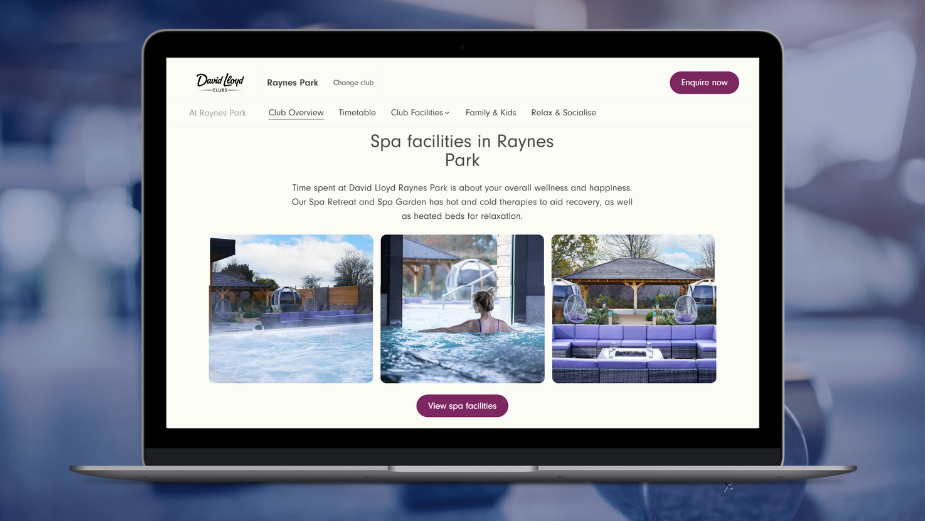
DAC Turns Brands Into Local Heroes: Here’s How It Does It in the UK

2024 was a standout year for international marketing agency, DAC. Not only was it named Integrated Search Agency of the Year at the US Agency Awards 2024, it also saw the amplification of its Brand to Local model, which has been designed to drive positive business outcomes through a localised, data-driven approach.
With over 50 years of experience working with brands on a localised scale across Europe, Canada and the US, DAC’s foundation of international marketing knowledge is second to none. After constructing an understanding of what works, doesn’t work, and crucially, can be improved, the concept of Brand to Local evolved. Merging expertise in different markets with a desire to consistently bolster the marketing strategies and insight that DAC offers its clients: the model shows that the key to great marketing lies in a foundation of nuanced local knowledge and audience understanding.
To demonstrate this, and find out more about the impact of localisation strategies on consumer engagement and customer obsession, DAC commissioned leading global market research company, Forrester, to explore how organisations use customer understanding to inform audience targeting.
Publishing its findings in a whitepaper titled, ‘The Forgotten “W” (Where) Improves Media and Creative Outcomes’ (downloadable here), and also presenting an accompanying webinar, the research highlights a discrepancy between brand and consumer perception around the idea of ‘putting the customer first’. It also suggests that localised marketing efforts can compensate for 'signal loss' in data, helping audience understanding.
To delve into findings from the whitepaper, and find out more about DAC’s Brand to Local approach in the UK market, LBB’s Abi Lightfoot caught up with DAC’s senior vice president, client strategy, Nasser Sahlool and Mike Fantis, vice president, managing partner, DAC UK.
Solving for Signal Loss
For DAC, the need for further research and the publication of the whitepaper, ‘The Forgotten “W” (Where) Improves Media And Creative Outcomes’, came from a growing awareness that despite the amount of data out in the world right now, a shift in recent years has impacted the ways in which it can be collected and used.
Firstly, the diversification of media platforms, as people move between search party engines and adjust their social media habits, means that you can no longer rely on data derived from a single source, such as Google or Meta. Secondly, the emergence of walled gardens has hindered the ability to draw cross-channel and cross-platform insights. This amounts to a concept labelled ‘signal loss’, which Nasser describes as ‘the loss of understanding of audiences, intent and behaviour’. “It’s a result of legislative changes, whether it’s GDPR or CCSP – it refers to people’s lack of desire to want to share information, and the right to opt out.”
Mike adds, “we view cookie reliance as a false economy. So it’s more about breaking down the silos between economy–retail, and performance–brand. So many brands talk about an omnichannel approach, but it’s impossible with the silos that exist.”
Signal loss ultimately impacts the level of customer understanding that a brand can achieve, as reflected in the results of Forrester’s survey of 257 B2C media and advertising decision makers. “Nearly all (98%) indicate that their targeting effectiveness has been negatively impacted by their current level of customer understanding, while two-thirds say that they are facing a significant negative impact.”
It is therefore a significant hurdle that brands and marketers need to overcome, in order to establish more effective targeting methods, efficiencies and improve overall value exchange.
Brand to Local
DAC’s Brand to Local model, therefore, exists as a way to counteract the pitfalls of signal loss. Whilst localisation strategies are not a new concept for the agency, which Nasser notes are ingrained in its heritage, the model utilises a modern approach to the idea.
“We've always said, for specific types of brands in particular, localisation is absolutely the way to help overcome a lot of these challenges. The big difference, though, is that people weren't necessarily paying attention to that statement or opinion.”
He continues, “Our heritage – as we're over 50 years old – comes out of the analog world, where we would work with national and international brands who needed to connect with local audiences. So it's not new for us, but, the application of ‘how do we actually make this come to life’, has been enhanced with things like the ability to scale out and accelerate using tools like AI.”
The Brand to Local model places importance on ‘where’, when considering your audience and building marketing strategies. Forrester’s research found that at the time: “Roughly two-thirds of respondents indicate that their audience targeting methods prioritise ‘who’ the customer is, while just 39% say that understanding ‘where’ the customer is located is a priority.” This indicates that location-based targeting is predominantly considered as a tactic within a marketing plan, as opposed to a strategy in itself.
The report also found that the inability to connect location-based targeting insights with broader advertising strategy, is the most pressing roadblock that respondents faced. However, it also found that using location for audience targeting was often seen as too expensive, difficult to measure, and hard to scale across their target market areas.
DAC’s model, however, demonstrates that localisation is an attainable, effective solution that doesn’t have to put pressure on already-stretched marketing budgets. “What we have observed is that there is an enormous amount of data that is available. Much of it is actually freely available to people.” Nasser explains, “The challenge is not the availability of the data, the challenge is thinking about how you connect those data sources together to build a more complete picture of an audience, as opposed to an individual.”
It encourages brands to think of the concept of ‘local’ as more than a geographical boundary, but instead, as a tool to bring data sources together under a shared commonality. It allows brands to identify specific audiences within a certain area, find out more about their shared values, needs and interests, and target them accordingly.
“You can use ‘local’ as the joining element between different data sources. And more importantly, you can then do something differently with it at a really local level – street by street, postal code by postal code and so on,” says Nasser. “So going beyond using it as a tactical button you press in a campaign setting, to really thinking about the emotional connection that these people need to develop with your brand, and doing it through media targeting as well as creative adaptation.”
It allows for brands to understand where their target demographic typically congregates and spends time, ensuring that ad placement can be positioned in a way that interacts with consumers going about their days consistently and effectively. “Enterprise to Local is the mechanism by which they can see it everyday,” Nasser explains, suggesting that the approach helps to build brand recognition, awareness and ultimately, obsession.
The Model in practice
DAC has worked with Japanese manufacturer Bridgestone for over 10 years. Utilising a Brand to Local approach has resulted in “continuous growth” for the company, which encompasses multiple brands working across manufacturing, agriculture, retail and more in thousands of locations.
Localisation has proven to be a driver for success and growth for Bridgestone, as Nasser reflects, “Being able to understand the competitive landscape, the audiences, the behaviour and the intent in each of these locations, and connect what is often aggressive and significant brand marketing with retail walk-ins and revenue, in terms of both existing customers and net new customer acquisition, has been critically important.”
A further example of the model in practice is DAC UK’s work with leading health and wellness group, David Lloyd Clubs. In this instance, David Lloyd Clubs’ global website required streamlining to drive customer awareness of their local clubs, and reinforce David Lloyd Clubs as a premier gym and fitness destination.
A further example of the model in practice is DAC UK’s work with leading health and wellness group, David Lloyd Clubs. With over 100 locations, the challenge was connecting strong brand-level visibility with localised discovery to drive member acquisition.
DAC implemented a location-focused SEO programme, using search performance insights to understand how different pages were ranking and where improvements could be made. This informed a series of optimisations designed to align content, structure, and user journeys with local intent — making it easier for users to discover and engage with their nearest club.
The result was a more connected brand-to-local experience that reinforced David Lloyd Clubs’ leadership in the health and wellness space.

The model serves as a driver for growth in the long and short term. DAC’s heritage as a performance agency allows for this as it understands how to get the most yield in the short term and implements strategies that account for this. Considering the medium to long term impact in conjunction, DAC’s Brand to Local model ensures that ongoing targeting to local, specific consumer groups brings about long-term success and growth too.
From DAC’s perspective, to unlock the enormous potential of location-based advertising, it’s imperative that brands see it as a core strategic pillar, as opposed to a tactic that is rolled out ad hoc.
It’s a model that’s tried, tested and trusted. embedded within every client relationship at DAC. Nasser emphasises, “It’s central to our pitch. We get to look clients in the eye and say, we're built for you, and here's why we're built for you. Our methodology, our experience, our expertise, our technology, our data and analytics, our creativity is all built to fulfill these purposes, specifically for brands like you. So from day one, they know what to expect, and they know why.”












